A no-rice dosa prepared with buckwheat groats and sago pearls/sabudana! Learn how to make this buckwheat dosa, aka kuttu dosa, with detailed stepwise pictures.
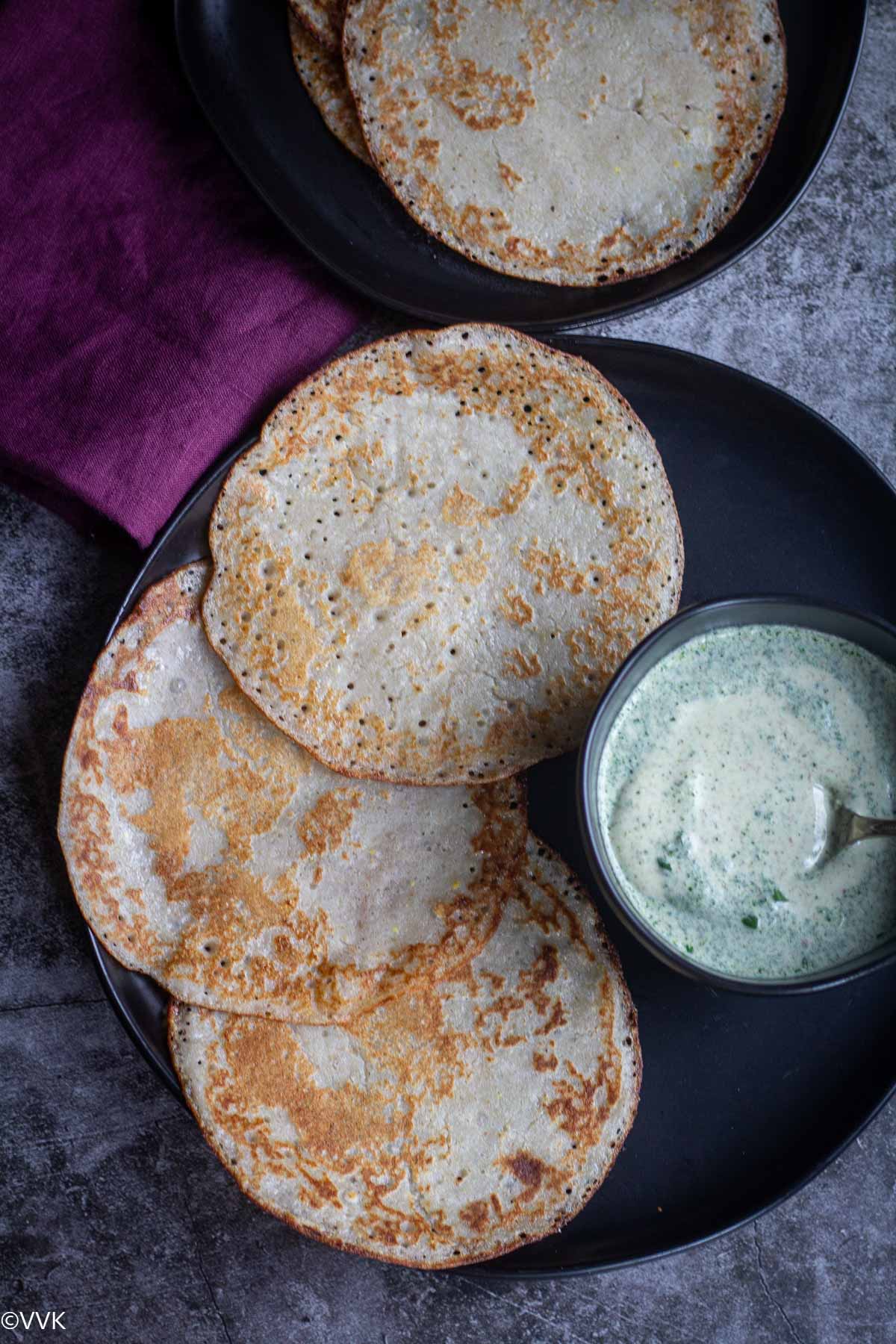
You all know how I love exploring new grains and seeds and rotating them in our daily meals. Buckwheat groats are my newfound love, and I have been making khichdi and sambar rice with them.
As I read more about it, I realized that it’s one of the famous grains consumed in India, especially during the Navratri fasting time. Dosa, roti, and poori prepared with buckwheat flour are commonly consumed during fasting.
That’s when I decided to try making buckwheat dosa with the groats instead of buckwheat flour along with sago pearls. I experimented with the ratio, and finally, 1:1 worked well.
Jump to:
If you are looking for a no-rice and no-ferment dosa, this buckwheat dosa is the best bet. It’s not instant, but you can very well prepare it as soon as you prepare the batter, without fermentation.
Buckwheat groats – the gluten-free pseudocereal
Like amaranth and quinoa, buckwheat is pseudocereal(it doesn’t grow on grasses) which we consume and treat like a grain! You can find buckwheat flour, buckwheat groats (hulled form), and buckwheat noodles in the market. You can use buckwheat groats in the place of rice, and that’s what I did today; I used the buckwheat groats to prepare this dosa.
Even though there is wheat in the name of the grain, buckwheat is not related to wheat, and it’s naturally gluten-free.
Buckwheat is highly nutritious, and it has a good source of protein and fiber. You can read more about its nutritional profile and health benefits on the Healthline website.
Ingredients required
We need only four ingredients for making this dosa, excluding salt and water. I went with an equal measure of buckwheat groats and sago pearls. Use the wide sago pearl variety, not the fine nylon variety.
I have used fenugreek seeds, but if you are making this part of your fasting meal, skip the fenugreek seeds and make sure to use rock salt/sendha namak, and the oil is that is recommended.
Note: We don’t fast during Navratri, and I learned about the grains that we can consume during this fast from my friends. Also, I used peanut oil to make the dosas. I am not sure about the oil that is used during fasting. Please use as per your custom. That’s the main reason I am not calling this dosa vrat ki dosa. :-)
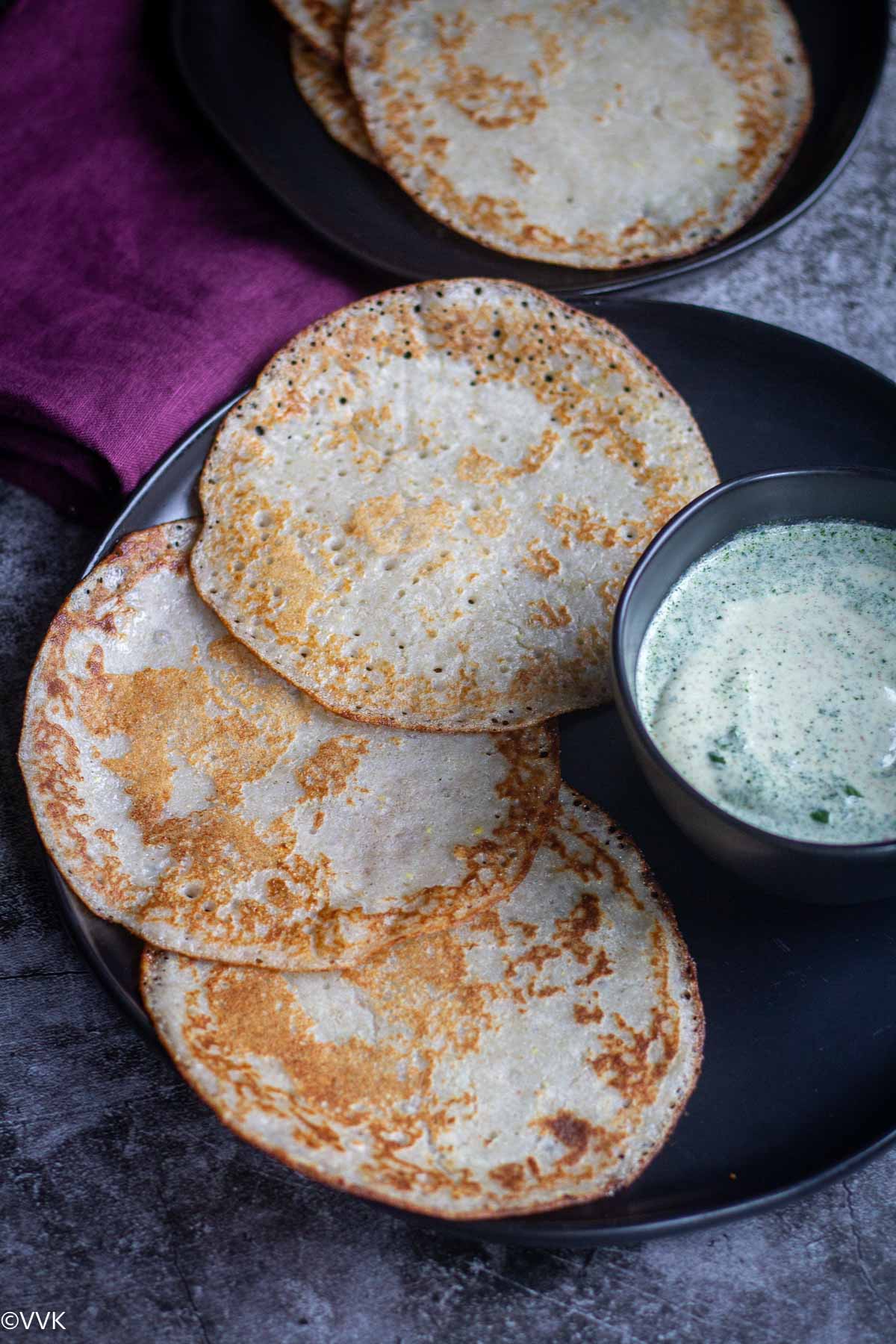
Variations
The texture of this dosa is pretty soft, and make sure to cook the dosa on both sides to crisp it up. You can also reduce the measure of sago to ½ and use ½ measure of millet or rice of your choice. Barnyard millet would be a perfect choice in this dosa as it’s one of the millets allowed during fasting.
Dietary specifications & yield
This no-rice buckwheat dosa is naturally vegan (unless you use ghee for making dosa), gluten-free, and nut-free, making it suitable for all.
Prepare the batter ahead and make them when needed. Relish the kuttu dosa or buckwheat dosa warm. The dosas become a bit sticky and soggy when stored longer. I have never made these dosas ahead and stored them for a long time.
The below measure yields 12 to 15 dosas. Serve this dosa with chutneys of your choice or sambar. I served the dosa with farali chutney, and I will share the recipe soon.
How to prepare buckwheat dosa
Rinsing and soaking
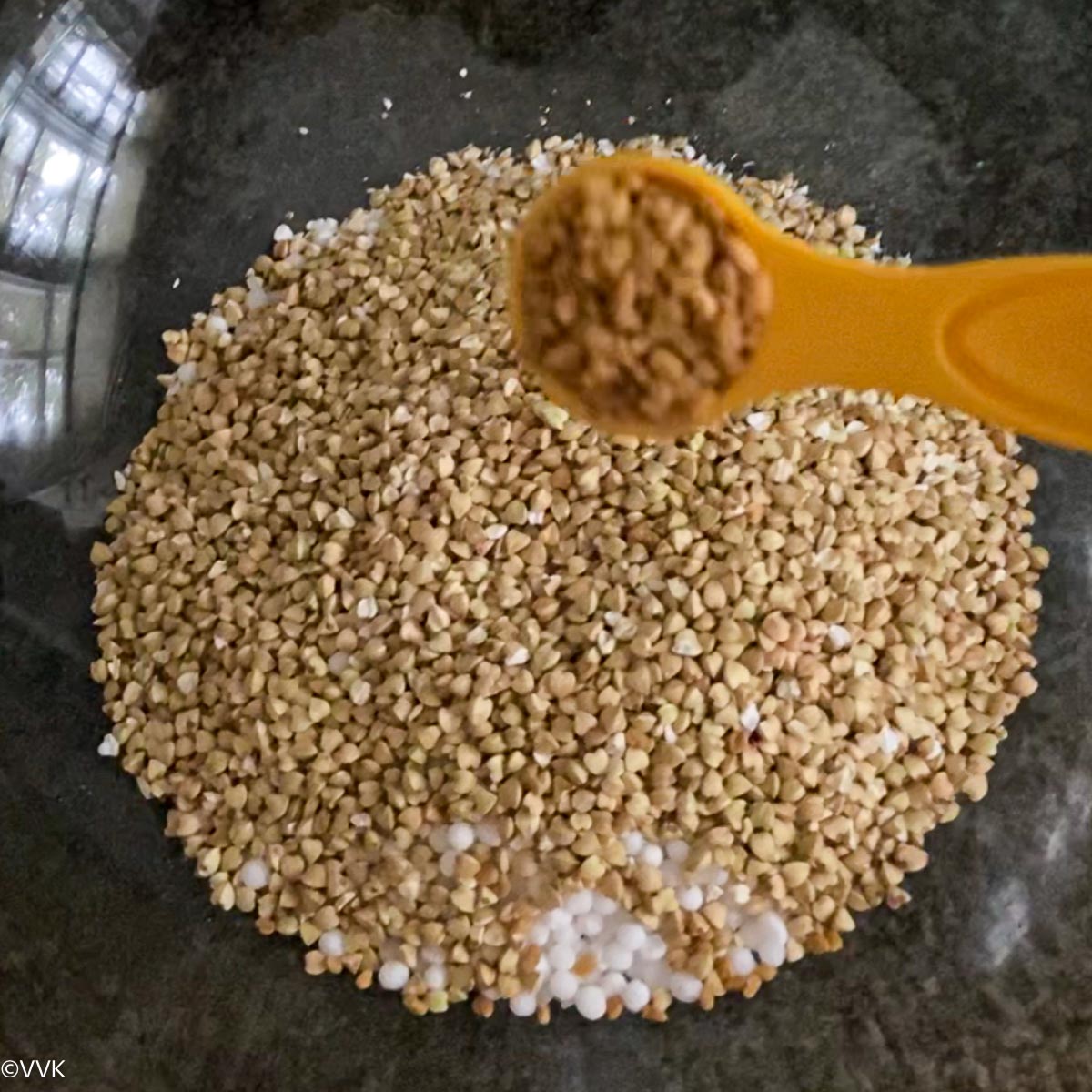
- Add the buckwheat groats, sago pearls, and fenugreeks to a bowl.
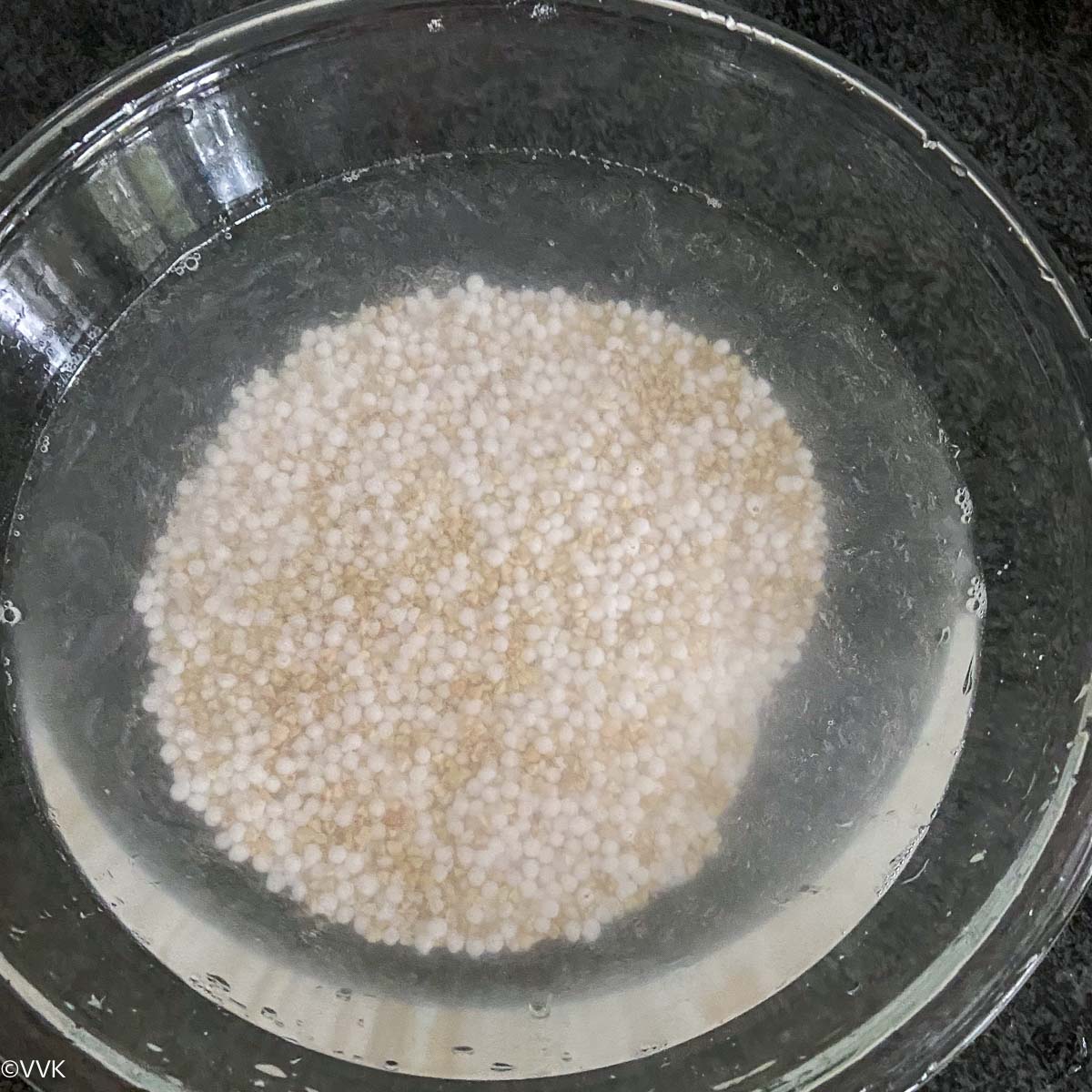
- Wash them together atleast 4 to 5 times until the water runs clear. Now add sufficient water and soak for atleast 4 to 5 hours.
Preparing the batter
- Drain the water (the water will be slimy, and that’s ok), and the buckwheat and sago pearls will be sticky and mushy, and that’s fine too.
- Add ¼ cup of water to the blender and add the sago and buckwheat groats. I added them all. Grind it into a smooth batter. I used the batter setting and ground the batter for full 60 seconds, and in between, I added only 2 tbsp of water. As both sago and buckwheat are mushy, you don’t need much water while grinding. I used ¼ cup + 2 tbsp of water in total.
- Transfer the batter to a bowl and add salt.
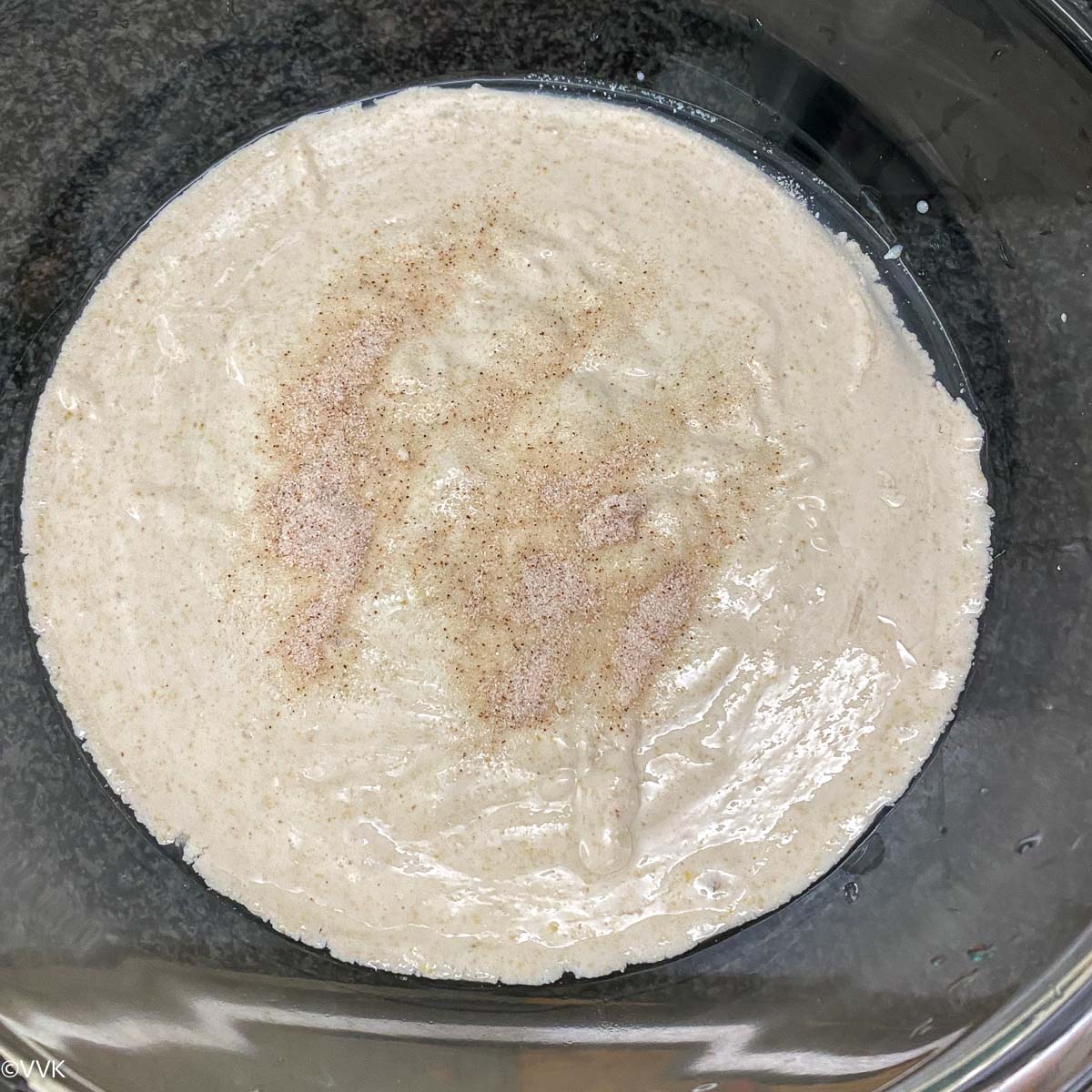
- Add approx ¾ cup of water and mix well. It should be in pouring consistency.
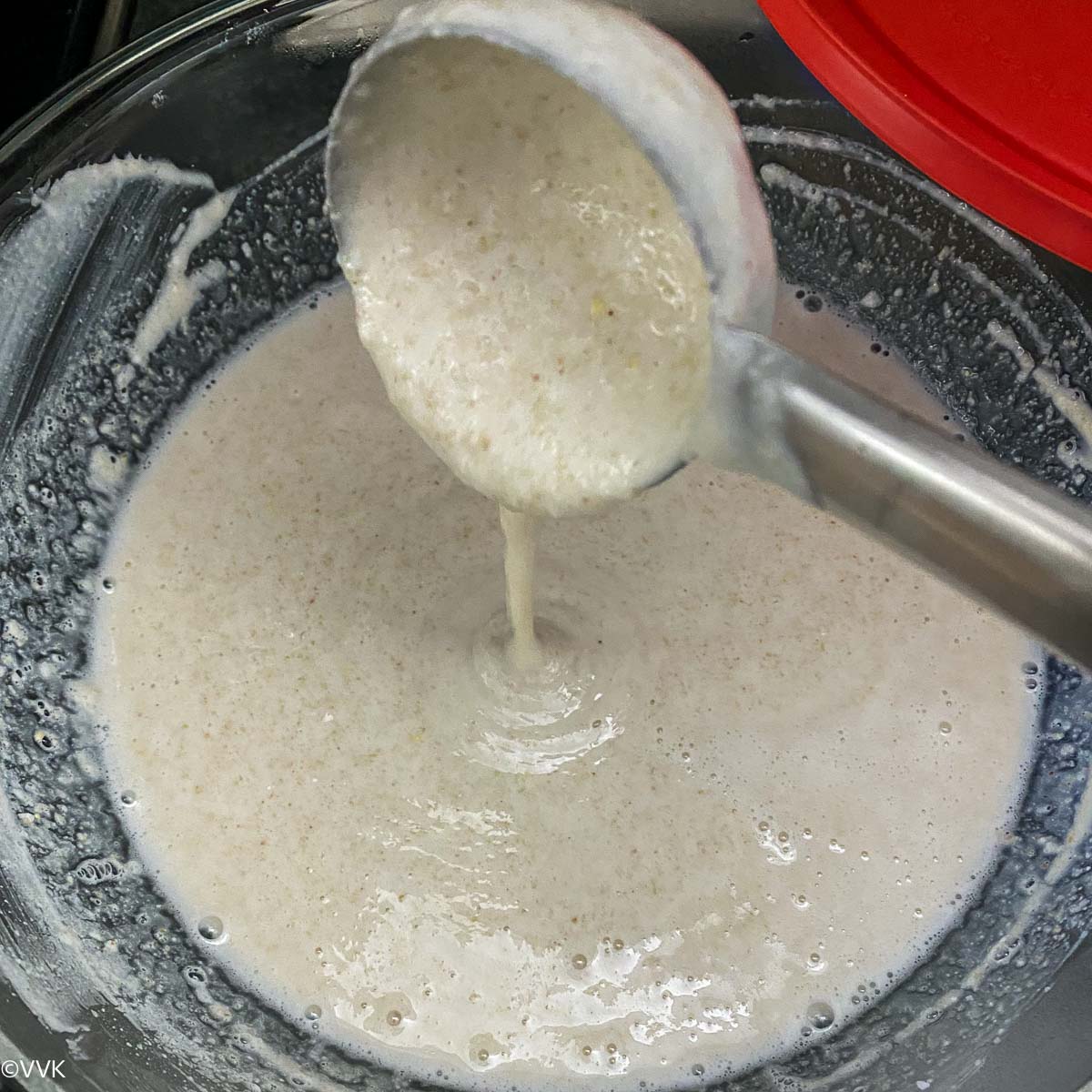
- Optional step – Fermentation is optional, but like aval dosa, you can ferment it for 5 to 8 hours, and the fermented dosa has a nice flavor, but fermentation is optional. I have tried this dosa with and without fermenting, and it comes out well.
Preparing the dosa.
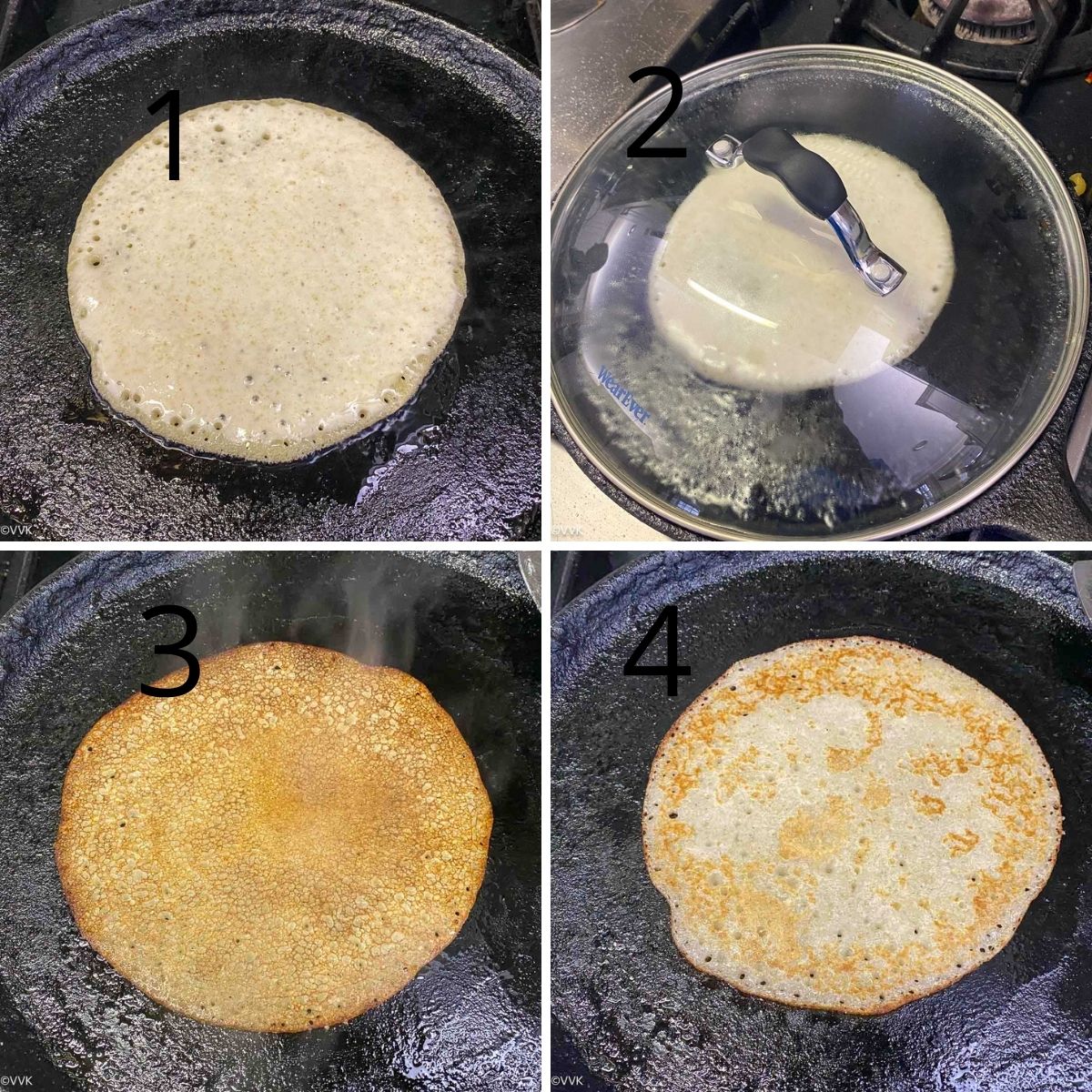
- (Pic 1)Heat a well seasoned cast-iron pan, and when it is hot, reduce the heat to medium-low. Take a spoon/ladle full of batter and pour it on the pan. Slightly spread it and do not make it too thin or spread as we do for regular dosa. Spread some oil around the edges; ½ tsp should be sufficient.
- (Pic 2) Cover it with the lid and let the buckwheat dosa cook in the steam. It usually takes about 60 to 75 seconds. Timing is approx, make sure the top side completely cooked.
- (Pic 3)When the top part is fully cooked, loosen the edges, flip the dosa, and cook for 30 to 45 seconds.
- (Pic 4) Flip the dosa again, cook for 10 seconds, and remove from the pan.
- Similarly, make the dosa with the remaining batter and serve hot with chutney.
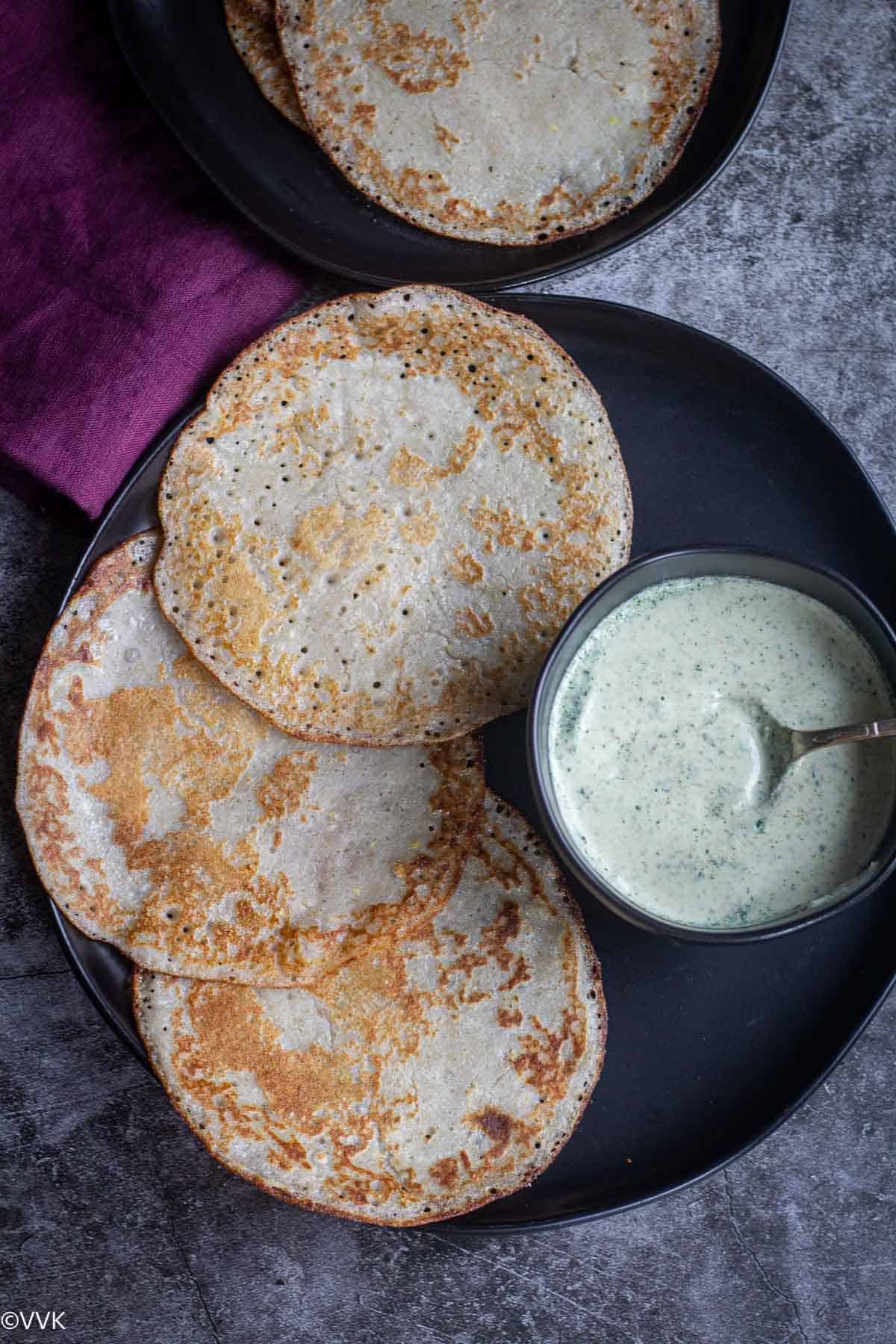
Recipe notes
- Make sure you cook the dosa well on both sides.
- If you are preparing it as a part of your fasting meal, skip fenugreek seeds and make sure to use rock salt. Also, use oil or ghee as recommended during fasting.
- I used my Blendtec to grind the batter, and the water measure mentioned above worked perfectly. Adjust it as required.
Explore other dosa recipes
PS: If you try this buckwheat dosa, please don’t forget to comment and rate this recipe. If you have any questions, please leave a comment, and I will get to it ASAP. Make sure to follow me on my Pinterest for more healthy and delicious ideas! Follow me on Instagram or join my Facebook Group for more recipe updates! You can also sign-up for my newsletter for weekly updates.
📖 Recipe
Buckwheat Groats Dosa | Kuttu Dosa
Ingredients
Measurement Details: 1 cup = 240ml; 1 tbsp = 15ml; 1 tsp = 5ml;
- 1 cup buckwheat groats
- 1 cup sago pearls sabudana
- 1 tsp fenugreek seeds skip if you are making during fasting
- ¾ tsp rock salt sendha namak
- 2 tbsp peanut oil or ghee
Instructions
Rinsing and soaking
- Add the buckwheat groats, sago pearls, and fenugreeks to a bowl.
- Wash them together atleast 4 to 5 times until the water runs clear. Now add sufficient water and soak for atleast 4 to 5 hours.
Preparing the batter
- Drain the water (the water will be slimy, and that’s ok), and the buckwheat and sago pearls will be sticky and mushy, and that’s fine too.
- Add ¼ cup of water to the blender and add the sago and buckwheat groats. I added them all. Grind it into a smooth batter. I used the batter setting and ground the batter for full 60 seconds, and in between, I added only 2 tbsp of water. As both sago and buckwheat are mushy, you don’t need much water while grinding. I used ¼ cup + 2 tbsp of water in total.
- Transfer the batter to a bowl and add salt.
- Add approx ¾ cup of water and mix well. It should be in pouring consistency.
- Optional step – Fermentation is optional, but like aval dosa, you can ferment it for 5 to 8 hours, and the fermented dosa has a nice flavor, but fermentation is optional. I have tried this dosa with and without fermenting, and it comes out well.
Preparing the dosa.
- (Pic 1)Heat a well seasoned cast-iron pan, and when it is hot, reduce the heat to medium-low. Take a spoon/ladle full of batter and pour it on the pan. Slightly spread it and do not make it too thin or spread as we do for regular dosa. Spread some oil around the edges; ½ tsp should be sufficient.
- (Pic 2) Cover it with the lid and let the buckwheat dosa cook in the steam. It usually takes about 60 to 75 seconds. Timing is approx, make sure the top side completely cooked.
- (Pic 3)When the top part is fully cooked, loosen the edges, flip the dosa, and cook for 30 to 45 seconds.
- (Pic 4) Flip the dosa again, cook for 10 seconds, and remove from the pan.
- Similarly, make the dosa with the remaining batter and serve hot with chutney.
Video
Notes
- Make sure you cook the dosa well on both sides.
- If you are preparing it as a part of your fasting meal, skip fenugreek seeds and make sure to use rock salt. Also, use oil or ghee as recommended during fasting.
- I used my Blendtec to grind the batter, and the water measure mentioned above worked perfectly. Adjust it as required.
Nutrition
I am not a nutritionist. The nutritional information is provided as a courtesy and is an estimate only. It varies depending upon the product types or brands.


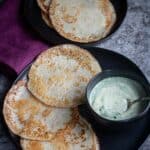
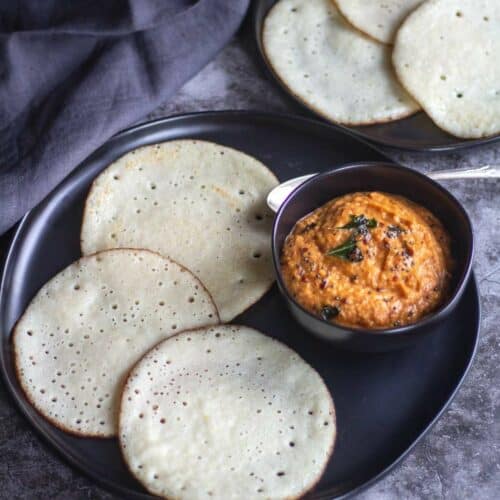
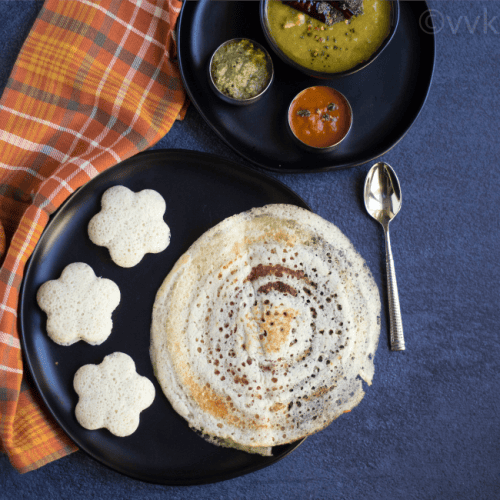
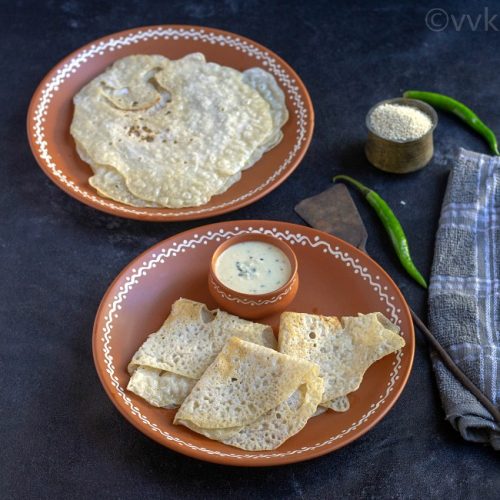
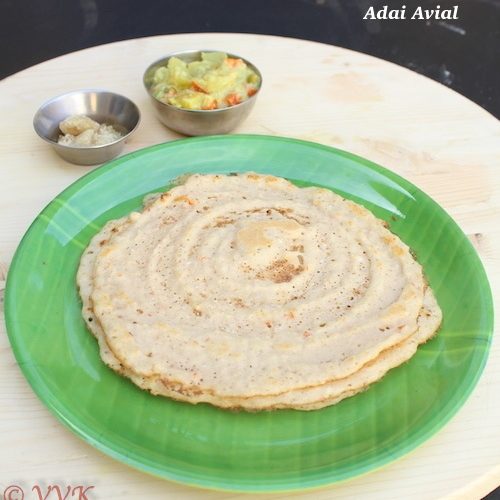
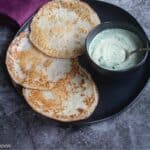

I followed the instructions
The taste is good
However the dosa was sticking on the tava
(We make different kinds of dosa almost daily)
So how can we rectify
Hmm when you cover and cook, it shouldn’t stick. May be you can try rubbing the tawa with onion or cucumber before and play with the heat settings.
These are healthy ones and the addition of sago pearls must have made them spongy.
Oh yeah. Thanks Suma.
Such a healthy dosa with buckwheat groats. It looks so soft. Would love to try it next time when I get buckwheat groats.
Thanks Narmadha.
I love that you have used buckwheat groats instead of flour. I got some this week and I am going to make it soon. And I am a big fan of instant dosa recipes.
Thanks so much Sandhya. Please do try and I am sure you will love it.
This is a great choice! I make usually with buckwheat flour for instant dosa. This is a great recipe. The addition of sago pearls should give a soft dosa. Love it!
Thanks so much.